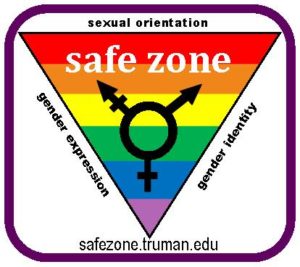Center for Diversity and Inclusion
Safe Zone Program
 The Truman State University Safe Zone Program was created to have a network of knowledgeable faculty, staff, and students to create safe and welcoming environments for lesbian, gay, bisexual, transgender, and queer (LGBTQ+) people.
The Truman State University Safe Zone Program was created to have a network of knowledgeable faculty, staff, and students to create safe and welcoming environments for lesbian, gay, bisexual, transgender, and queer (LGBTQ+) people.
We offer Safe Zone training sessions, and anyone can come join us and become a Safe Zone ally.
Training Sessions
Completing the training and displaying a Safe Zone sign indicates participants are committed to increasing their knowledge of LGBTQ+ issues and challenging homophobic and heterosexist comments or behaviors in an educational and informative manner. Safe Zone members are able to provide assistance as needed, including referrals to University Counseling Services.
Dr. Summer Pennell, Assistant Professor of English Education and longtime LGBTQ+ education activist, leads an interactive training with the assistance of student interns. Participants learn current terminology and simple ways to create a welcoming campus environment.
Want to participate in a Safe Zone Training?
A Safe Zone Ally Should…
Completion of the Safe Zone Program gives participants the option of taking and displaying a placard denoting them as a member of the Safe Zone community. If an individual chooses to display the placard, they should agree to the following:
- To provide a “safe zone” for any LGBTQ+ people
- To be an ally of LGBTQ+ people
- To provide affirming resources to the best of their ability (they aren’t expected to be an expert)
- Commit to educating themselves and others about oppression, heterosexism, biphobia, transphobia, and homophobia, and combating it on a personal level
- Commit to working toward providing a safe, confidential support network for people who self-identify as LGBTQ+
- Commit to treating everyone with the dignity and respect to which they are entitled as human beings
Have questions?
Contact Summer Pennell, spennell@truman.edu.